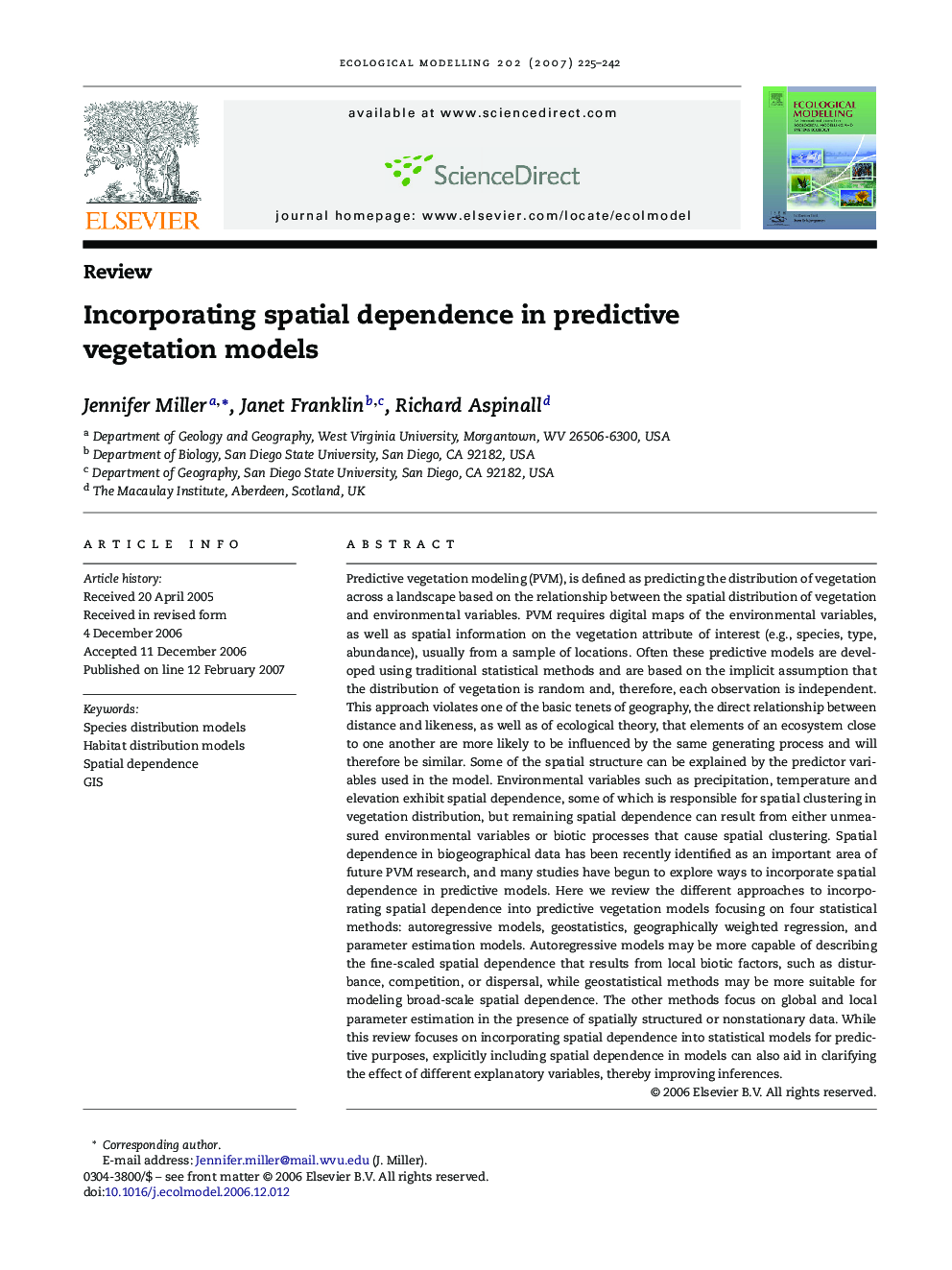| کد مقاله | کد نشریه | سال انتشار | مقاله انگلیسی | نسخه تمام متن |
|---|---|---|---|---|
| 4378658 | 1617552 | 2007 | 18 صفحه PDF | دانلود رایگان |
عنوان انگلیسی مقاله ISI
Incorporating spatial dependence in predictive vegetation models
دانلود مقاله + سفارش ترجمه
دانلود مقاله ISI انگلیسی
رایگان برای ایرانیان
کلمات کلیدی
موضوعات مرتبط
علوم زیستی و بیوفناوری
علوم کشاورزی و بیولوژیک
بوم شناسی، تکامل، رفتار و سامانه شناسی
پیش نمایش صفحه اول مقاله

چکیده انگلیسی
Predictive vegetation modeling (PVM), is defined as predicting the distribution of vegetation across a landscape based on the relationship between the spatial distribution of vegetation and environmental variables. PVM requires digital maps of the environmental variables, as well as spatial information on the vegetation attribute of interest (e.g., species, type, abundance), usually from a sample of locations. Often these predictive models are developed using traditional statistical methods and are based on the implicit assumption that the distribution of vegetation is random and, therefore, each observation is independent. This approach violates one of the basic tenets of geography, the direct relationship between distance and likeness, as well as of ecological theory, that elements of an ecosystem close to one another are more likely to be influenced by the same generating process and will therefore be similar. Some of the spatial structure can be explained by the predictor variables used in the model. Environmental variables such as precipitation, temperature and elevation exhibit spatial dependence, some of which is responsible for spatial clustering in vegetation distribution, but remaining spatial dependence can result from either unmeasured environmental variables or biotic processes that cause spatial clustering. Spatial dependence in biogeographical data has been recently identified as an important area of future PVM research, and many studies have begun to explore ways to incorporate spatial dependence in predictive models. Here we review the different approaches to incorporating spatial dependence into predictive vegetation models focusing on four statistical methods: autoregressive models, geostatistics, geographically weighted regression, and parameter estimation models. Autoregressive models may be more capable of describing the fine-scaled spatial dependence that results from local biotic factors, such as disturbance, competition, or dispersal, while geostatistical methods may be more suitable for modeling broad-scale spatial dependence. The other methods focus on global and local parameter estimation in the presence of spatially structured or nonstationary data. While this review focuses on incorporating spatial dependence into statistical models for predictive purposes, explicitly including spatial dependence in models can also aid in clarifying the effect of different explanatory variables, thereby improving inferences.
ناشر
Database: Elsevier - ScienceDirect (ساینس دایرکت)
Journal: Ecological Modelling - Volume 202, Issues 3â4, 10 April 2007, Pages 225-242
Journal: Ecological Modelling - Volume 202, Issues 3â4, 10 April 2007, Pages 225-242
نویسندگان
Jennifer Miller, Janet Franklin, Richard Aspinall,